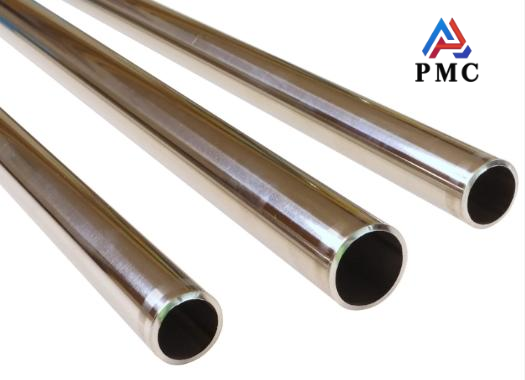
The Secret of Corrosion Resistance of Molybdenum-Containing 316 Stainless Steel Pipe
316 stainless steel pipes have become the "darling" of many industries due to their excellent corrosion resistance. The addition of molybdenum gives 316 stainless steel pipes unique corrosion resistance. In-depth exploration of the corrosion resistance secrets of molybdenum-containing 316 stainless steel pipes is of great significance for giving full play to its performance advantages and expanding its application areas.
Chemical composition and basic characteristics of 316 stainless steel pipe
Chromium is the basis of stainless steel's corrosion resistance. When the chromium content reaches more than 12%, chromium will react with oxygen in the air to form an extremely thin, strong and dense chromium-rich oxide film (passivation film) on the surface of the steel. This passivation film can effectively prevent further penetration and oxidation of oxygen atoms, thereby gaining anti-corrosion ability. The addition of nickel further improves the corrosion resistance and toughness of stainless steel, while also expanding the austenite phase region, allowing stainless steel to exist in a stable austenite structure at room temperature.

The key role of molybdenum in the corrosion resistance of 316 stainless steel pipe
Molybdenum (Mo), as a key alloying element in 316 stainless steel pipes, plays a vital role in improving its corrosion resistance. The atomic radius of molybdenum is close to that of iron. It can solid-solution strengthen the matrix in stainless steel and improve the strength and hardness of the steel. More importantly, molybdenum can significantly enhance the corrosion resistance of stainless steel in reducing media (such as sulfuric acid, hydrochloric acid, etc.). In an environment containing chloride ions, the passive film on the surface of ordinary stainless steel is easily destroyed by chloride ions, forming pitting pits. The presence of molybdenum can promote the enrichment of chromium in the passive film, making the passive film more stable and dense, and inhibiting the occurrence and development of pitting corrosion.
From a microscopic perspective, molybdenum can change the composition and structure of the passive film on the surface of stainless steel. Studies have shown that molybdenum oxides (such as MoO₃) are formed in the molybdenum-containing passivation film. These oxides have good chemical stability and can effectively prevent the contact between the corrosive medium and the steel matrix. At the same time, molybdenum can also improve the resistance of stainless steel in crevice corrosion environment. Crevice corrosion usually occurs in the crevice area where two surfaces are in contact. Due to the poor flow of the medium in the crevice, a local corrosive environment is easily formed. The addition of molybdenum can reduce the electrochemical corrosion rate in the crevice, thereby improving the crevice corrosion resistance of stainless steel.
Other factors affecting the corrosion resistance of molybdenum-containing 316 stainless steel pipe
Although molybdenum significantly improves the corrosion resistance of 316 stainless steel pipes, other factors will also affect its corrosion resistance. The first is the carbon content. The carbon in the 316 stainless steel pipe will combine with chromium to form chromium carbide (Cr₂₃C₆), which will precipitate at the grain boundaries, resulting in a decrease in the chromium content near the grain boundaries, thereby reducing the intergranular corrosion resistance of the stainless steel. In order to improve this problem, a low-carbon version of 316L stainless steel was derived, which has a lower carbon content and greatly reduced tendency to intergranular corrosion.
Secondly, the heat treatment process will also affect the corrosion resistance of 316 stainless steel pipe. Appropriate solution treatment can fully dissolve the alloy elements in the austenite matrix and evenly distribute them, thereby improving the quality and stability of the passivation film. If the heat treatment is not done properly, it may cause problems such as carbide precipitation and coarse grains, reducing the corrosion resistance of stainless steel. In addition, the surface processing state also affects the corrosion resistance. A smooth surface is more likely to form a complete passivation film, while a rough surface is more likely to retain impurities and corrosive media, accelerating the occurrence of corrosion.
The excellent corrosion resistance of molybdenum-containing 316 stainless steel pipe is the result of the synergistic effect of multiple alloy elements and reasonable production technology. Molybdenum plays a key role in improving the corrosion resistance of stainless steel in reducing media, chloride ion environments and crevice corrosion environments by improving the composition and structure of the passivation film. However, in practical applications, it is also necessary to comprehensively consider the impact of other factors on corrosion resistance. By rationally selecting materials, optimizing production processes and properly using and maintaining, the corrosion resistance advantages of molybdenum-containing 316 stainless steel pipes can be fully utilized to provide reliable material guarantees for the development of various industries. With the continuous advancement of materials science and technology, research on the corrosion resistance of molybdenum-containing 316 stainless steel pipes will continue to deepen, and it is expected that new stainless steel materials with better performance will be developed.
Read more: 316 Stainless Steel Pipe: Corrosion-resistant Strength


